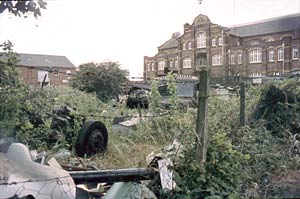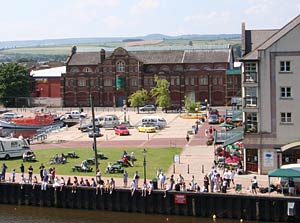
Haven Banks
Page updated 21st July 2011
The area opposite the quay roughly from the canal basin to the southern Exe Bridge is called Haven Banks. This was once an industrial area with a railway line to the canal basin, an oil depot, an electricity generating station and more. The upper part of Haven Banks, opposite Shilhay, was often used for travelling fairs.
James Cossins remembered the area of the canal basin before it was built "Opposite the quay within the enclosed wall and basin was a rough piece of undulating ground, with a stagnant pool of water, which in winter was a place of resort for skating and sliding on the ice." Early maps clearly show a long, sausage shaped depression.
The engineer James Green advised the city to build a canal basin, which was added in 1830. Known as the New Cut, it utilised the long, water filled depression already mentioned; he created a large semicircle cut out of the parallel sides to allow the turning of large boats. In 1844 the railway reached Exeter and the canal and basin lost trade to the GWR, and even extending the railway to the basin did not improve the situation.
In the 20th century, trade continued with petrol, oil, timber, coal, cement and even potatoes passing through the port. However, the decline of the woollen industry meant that exports dropped significantly.
The area has been largely reclaimed for domestic housing and small cafés and shops.
 Haven Banks in 1974 - photo Alan H Mazonowicz
Haven Banks in 1974 - photo Alan H Mazonowicz Haven Banks in 2005 - photo David Cornforth
Haven Banks in 2005 - photo David Cornforth
│ Top of Page │